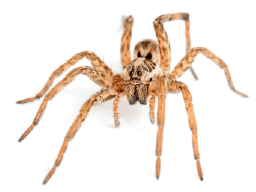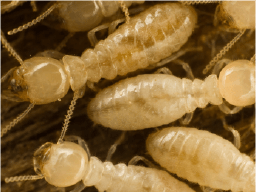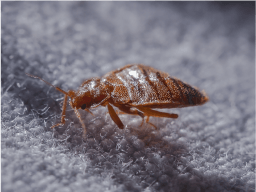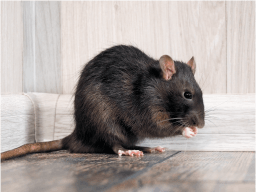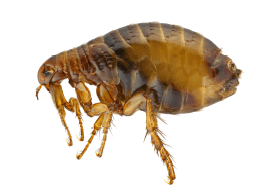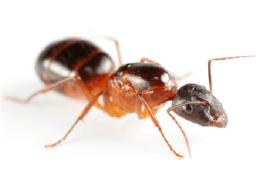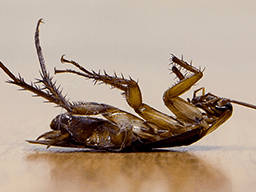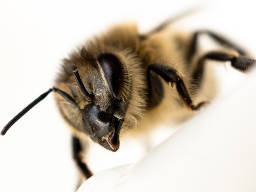The Lifecycle of Carpenter Ants
by John Saenz | February 6, 2025 | Blog
When it comes to household pests, carpenter ants often rank high on the list of concerns for homeowners. While these ants don’t eat wood like termites, their ability to create nests inside wooden structures can lead to significant damage over time if left unchecked. In this blog, we’ll dive into the carpenter ant life cycle, how they affect your home, and expert tips to prevent and control carpenter ant infestations.

The 4 Stages of the Carpenter Ant Life Cycle
Carpenter ants are sneaky invaders that can wreak havoc on your home if left unchecked. Their journey from egg to full-grown ant involves stages that homeowners should know of. Let’s dive into the four phases of the carpenter ant life cycle and uncover how these ants thrive:
1. Egg Stage
The carpenter ant life cycle starts when a fertilized queen lays eggs. After mating, typically in late summer or early fall, during a special reproductive flight known as the nuptial flight, the male ant dies, and the queen will find a suitable nesting site to start her carpenter ant colony.
This site is often a damp or decaying wood, such as tree stumps, logs, or rotting structures. However, in homes, they may settle in attics, basements, walls, window frames, or wooden beams. She will lay a batch of tiny, oval-shaped, white, or translucent eggs, usually numbering around 20.
These eggs typically hatch in 10 to 14 days, depending on environmental conditions. During this time, the queen stays in her nest, nourishing the eggs and waiting for them to hatch into larvae. The queen only leaves her nest once in her lifetime to mate.
Afterward, she stays in her nest, laying hundreds of eggs daily. Carpenter ant colonies typically start with just one queen, but as they expand, multiple queens may be produced, strengthening the colony and ensuring its continued growth.
2. Larvae Stage
Once the eggs hatch, they become larvae, resembling small, white, legless grubs. At this stage, the larvae completely depend on the queen and worker ants for survival. The queen initially feeds the larvae with saliva and regurgitated food, but as the carpenter ant colony grows, worker ants take over feeding duties. They usually provide dead insects, sugary substances, or plant matter to help the larvae develop.
As larvae grow, they shed their exoskeleton multiple times before entering the next phase. The stronger and healthier the larvae, the more efficient the carpenter ant colony will become over time. The larval stage also provides the worker ants with new members to help with various tasks, such as foraging, building the nest, and defending the carpenter ant colony. This stage lasts about 10 to 20 days, after which the larvae become pupae.
3. Pupal Stage
Once larvae fully mature, they transition into pupae encased in papery, silk cocoons. Some pupae may appear naked (without cocoons) but continue developing inside. The pupae are still immobile and hidden away in the nest, protected by the worker ants.
During the pupal stage, the ants undergo a complete metamorphosis, developing legs, wings (in reproductive ants), and hardened exoskeletons. Depending on temperature and environmental conditions, this stage lasts about 10 to 24 days. Once fully developed, the adult ants emerge, ready to take on specific roles within the carpenter ant colony.
During the pupal stage, carpenter ants also undergo a period of dormancy, where they don’t eat or move. The queen remains active, continuing to lay eggs, while workers tend to the pupae.
4. Adult Stage
The adult stage in the carpenter ant life cycle is where the carpenter ant colony starts to take shape. Once the pupae mature, they emerge as fully developed adults. Each ant has a designated role within the carpenter ant colony, which falls into one of three main categories:
- Worker Ants:
- Size and Physical Traits: Worker ants are typically ¼ to ½ inches long and have a smooth, shiny black or reddish-brown exoskeleton and large mandibles.
- Behavior: Worker ants are the most numerous in the colony. They are responsible for all the labor: foraging for food, protecting the carpenter ant colony from predators, and expanding the nest by burrowing into wood. Carpenter ants do not consume wood but chew through it to create elaborate tunnels and galleries within wooden structures.
- Habits: Workers forage both day and night, looking for food sources like proteins, sugars, and other materials to feed the queen, larvae, and other workers. They also help build the nest by chewing through wood and depositing the excavated debris outside the nest.
- Male Ants (Drones):
- Purpose: Male ants are created at specific times of the year, often when the colony is ready to reproduce. Their primary role is to mate with the queen. Once they fulfill this task, they die.
- Physical Traits: Drones are similar in appearance to worker ants but are typically slightly larger and have wings that allow them to fly in search of queens during the nuptial flight.
- Queen Ants:
- Role in Colony Expansion: Once the carpenter ant colony matures, new queens are produced. These queens are larger than the workers and drones and have fully developed wings. The new queens leave the colony in a reproductive flight, where they mate with male ants from other colonies and then go on to start new colonies. These queen ants are capable of producing thousands of offspring over their lifetime.
Once the carpenter ant colony reaches a certain size, the cycle of reproduction and colony expansion continues, leading to multiple generations living within the nest. The carpenter ant colony may even split into multiple colonies, a process known as “budding.” Over time, the colony matures, and satellite nests may develop, leading to a carpenter ant infestation in multiple parts of a structure.
Carpenter Ant Damage: Signs & How They Impact Your Home
Carpenter ants tunnel through wood, causing hidden structural damage that can go unnoticed for long periods. Unlike termite damage, which is often visible on the surface, carpenter ant damage is typically confined to the interior of the wood.
Over time, these ants can weaken the structure of beams, walls, window sills, and other wooden components in your home. If left untreated, the damage can become costly, requiring structural repairs, the replacement of wooden beams, or the reinforcement of weakened areas.
One of the earliest warning signs of a carpenter ant infestation is the presence of sawdust-like debris (frass) near walls or baseboards—this consists of wood shavings, dead ant parts, and other material the ants push out from their tunnels. Infested wood may also sound hollow when tapped due to the extensive tunneling inside.
You might also spot visible worker ants, typically black or reddish-black, in areas like kitchens, bathrooms, or near wooden structures. Another indicator is rustling sounds from inside walls or beams as carpenter ants continue moving and expanding their nest.
How to Prevent a Carpenter Ant Life Cycle in Your Home in 5 Steps
Preventing an infestation starts with disrupting the carpenter ant life cycle. Follow these five steps to keep your home protected:
- Seal Entry Points: Carpenter ants can enter through small cracks and gaps in your home. Inspect the foundation, windows, doors, and other potential access points. Seal gaps with caulk and ensure weatherstripping around windows and doors is intact.
- Reduce Moisture in and Around Your Home: Carpenter ants are drawn to moisture. Repair any leaks in pipes, faucets, and the roof. Ensure proper drainage around the foundation and keep wood and other materials dry to prevent ants from nesting in damp wood.
- Remove Wood Debris: Keep your yard and home clear from wood piles, rotting logs, or fallen branches, as these provide ideal nesting sites for carpenter ants. Keep firewood stored away from the home, and clear any debris near the foundation.
- Inspect and Maintain Wooden Structures: Regularly check wooden beams, window sills, and other wooden areas for signs of tunneling or damage. Early detection can help stop a full-blown infestation and disrupt the carpenter ant life cycle.
- Use Ant Baits and Repellents: If you notice ants around your home, you can try placing carpenter ant baits near areas where you’ve seen activity. These baits attract ants and can help you eliminate the colony. Additionally, natural repellents such as peppermint oil or vinegar can help deter ants from entering your home and interfering with their life cycle.
When to Call a Professional?
If you see a steady stream of activity or large swarms, it’s a sign that the carpenter ant colony may be well-established and in need of expert treatment. As the carpenter ant life cycle progresses, the ants’ behavior can change, making them more likely to invade new parts of your home. DIY methods can only address part of the problem, missing hidden nests, and fail to target the full extent of the colony.
A professional pest control service will not only identify and treat the current infestation, but they’ll also understand the patterns of the carpenter ant life cycle, ensuring that no part of the colony is left behind.
H2: Ready to Tackle Your Carpenter Ant Problem?
Don’t let a carpenter ant infestation take over your home. If you’re noticing signs of these pests or suspect a hidden nest, Pest Control Experts are here to help. We work with highly trained pest control experts who understand the carpenter ant life cycle to ensure you get the best service and long-lasting strategies to address your carpenter’s ant infestation.
Contact us today for a complimentary quote and schedule your home inspection right away. Our experienced team is ready to assess your home and provide the most effective solutions to protect your space!





